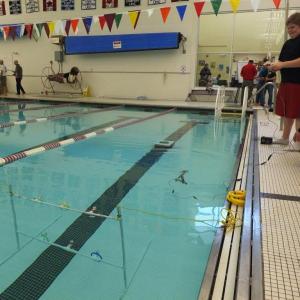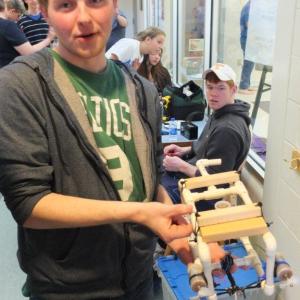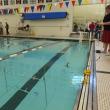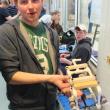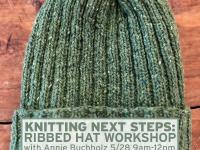When robots learn to swim
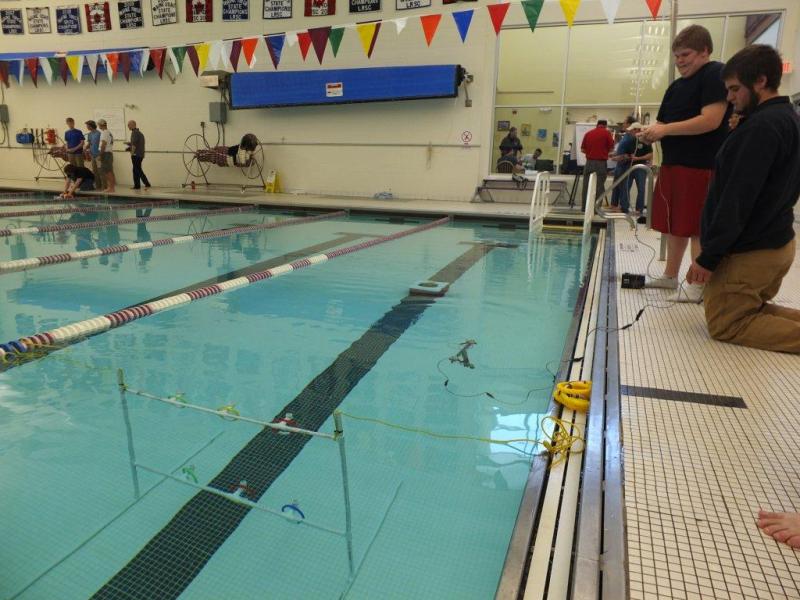 Eli Farnham maneuvers his robot at the YMCA pool in Bath, while his partner Linc Simmons looks on. Below: Dan Murray poses with his Seaperch robot. Murray and his partner Alex Owen placed second in the contest. RYAN LEIGHTON/Boothbay Register
Eli Farnham maneuvers his robot at the YMCA pool in Bath, while his partner Linc Simmons looks on. Below: Dan Murray poses with his Seaperch robot. Murray and his partner Alex Owen placed second in the contest. RYAN LEIGHTON/Boothbay Register
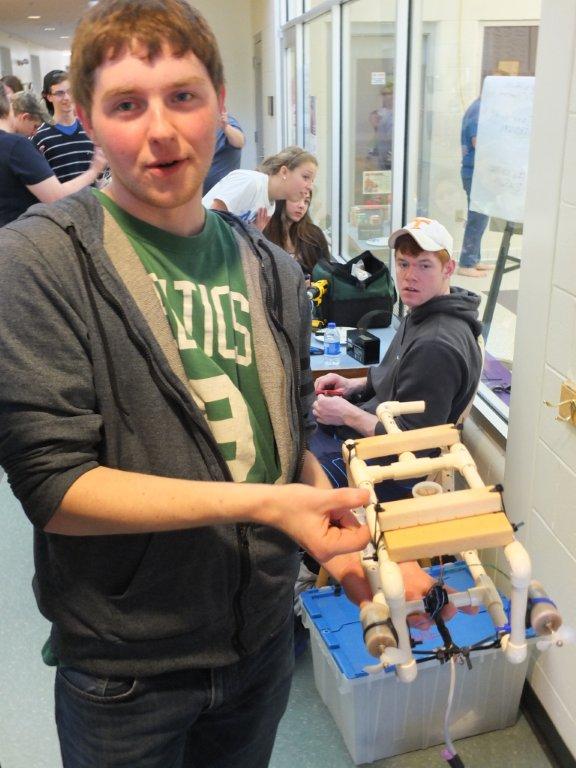 Dan Murray poses with his Seaperch robot. Murray and his partner Alex Owen placed second in the contest. RYAN LEIGHTON/Boothbay Register
Dan Murray poses with his Seaperch robot. Murray and his partner Alex Owen placed second in the contest. RYAN LEIGHTON/Boothbay Register
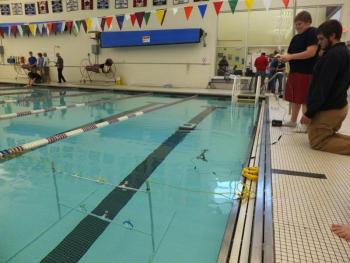 Eli Farnham maneuvers his robot at the YMCA pool in Bath, while his partner Linc Simmons looks on. Below: Dan Murray poses with his Seaperch robot. Murray and his partner Alex Owen placed second in the contest. RYAN LEIGHTON/Boothbay Register
Eli Farnham maneuvers his robot at the YMCA pool in Bath, while his partner Linc Simmons looks on. Below: Dan Murray poses with his Seaperch robot. Murray and his partner Alex Owen placed second in the contest. RYAN LEIGHTON/Boothbay Register
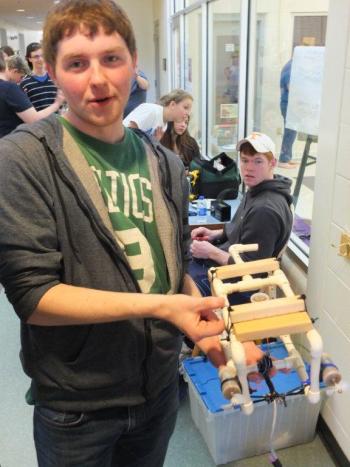 Dan Murray poses with his Seaperch robot. Murray and his partner Alex Owen placed second in the contest. RYAN LEIGHTON/Boothbay Register
Dan Murray poses with his Seaperch robot. Murray and his partner Alex Owen placed second in the contest. RYAN LEIGHTON/Boothbay Register
Underwater robots! Could this be the future, or just another day in science class?
The answer is both.
Engineering students from Boothbay Region High School launched their submersible robots for the SeaPerch Challenge, April 6 at the Bath YMCA.
The robots were designed to remove rings off a stand in one scenario and then deposit them in an underwater receptacle, while another scenario required skillful maneuvering through a fixed obstacle course. Students scored points for the time it took to complete each objective, and the efficiency of the design.
Additionally, students had the opportunity to pitch their prototypes to representatives from the American Society of Naval Engineers.
Some of the robots performed the way their creators intended. Others did not.
The robot built by Eli Farnham and Linc Simmons was made for speed. The duo decided to stray from the conventional box design, and built what looked like a funky set of barbeque tongs with two motors powering it. But their design exceeded expectations, resulting in too much thrust and not enough stability. Instead of gracefully dislodging the rings, their robot thrashed about, often getting entangled in its own power chord.
Out of the 10 teams competing, Boothbay students Dan Murray and Alex Owen placed second overall and qualified for the national competition in May. Their robot grabbed six out of six rings for a successful deep dive, but struggled through the obstacle course. Murray said he would try to tweak the speed if he and Owen are to attend the nationals.
Dave Marcello, regional director of the SeaPerch Challenge, said this was the second annual contest held in Bath. The SeaPerch events date back to a decade ago when STEM (Science, Technology, Engineering and Mathematics) programs first surfaced. Working in conjunction with MIT and the Office of Naval Research, SeaPerch contests are picking up around the nation, as more STEM programs become available in public schools.
Through the design and construction process, students are exposed to various scientific systems that could lead them into a future career in engineering. “The contest is designed for both middle school and high school kids. It's very hands-on,” Marcello said.
Event Date
Address
United States

